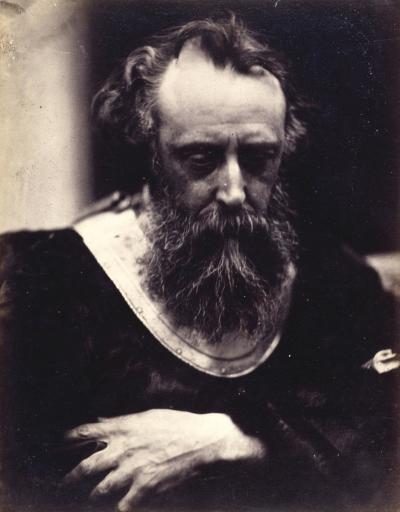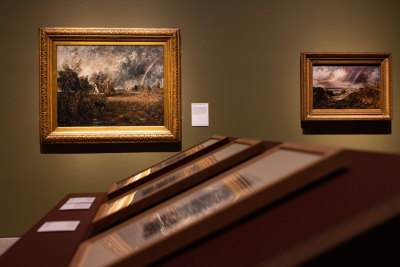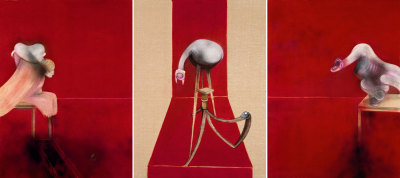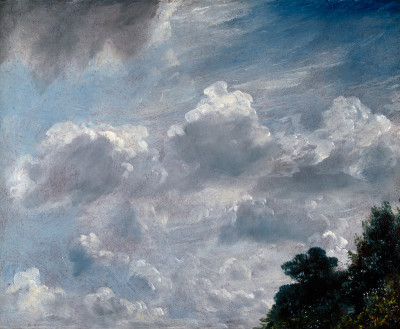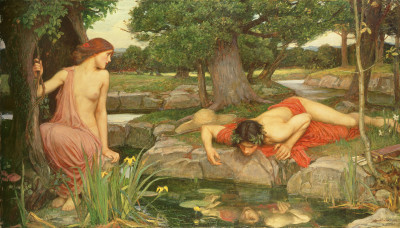Artist of the month: February 2014
Artist of the month: February 2014
George Frederic Watts RA
By the RA Collection team
Published 1 February 2014
George Frederic Watts RA was an influential and pre-eminent painter during his own lifetime. He became known for his portraiture and his Symbolist allegorical paintings, frequently depicting scenes from mythology, history, literature, and the Bible.
-
Watts was greatly admired by the Pre-Raphaelite and Arts and Crafts movements, while artists like Rossetti likewise influenced Watts. The social theorist Thomas Carlyle was also an influence upon Watts, who cited a desire for art to be “both spiritual and intellectual” and for artists to play a political role.
Watts’ work Denunciation of Cain [below left] was given by the artist as his diploma piece, upon his acceptance by the Royal Academy as an academician in 1872. Watts depicted this particular subject matter multiple times; one version can be viewed at the Watts Gallery in Compton, Surrey. The treatment of the naked figures shows the influence upon the artist of Classicism and Michelangelo. Watts spent several years in Italy earlier in his career, developing an interest in the Italian Renaissance painters and fresco in particular. This influence may be seen in the painterly quality of this work, which at the time of exhibition was described as having “as much the appearance of a fresco as a work in oil can have.”
Watts was critically acclaimed for his skill at portraiture throughout his career, and he painted the portraits of many eminent cultural and political figures. The artist’s portrait of Sara Princep [below centre] conveys a sense of intimacy and spontaneity that reflects the close relationship between the two. At the time, due to ill health, Watts was staying for an extended period in Princep’s home at Little Holland House with her husband Henry and their children. Holland House was a centre for their bohemian, artistic circle, attracting many of Watts’ fellow artist and writer friends like Rossetti, Thackeray, Tennyson, and Frederick, Lord Leighton. Watts was married twice, first to actress Ellen Terry and to the artist and designer Mary Fraser Tytler later in his life. Both women were also associated with the Princep’s artistic circle. Watts’ connection to this group can also be linked to the influence of Aestheticism upon the artist through different periods of his career, as several of his artistic colleagues there were proponents of the movement.
-
Gallery of works

George Frederic Watts RA, The Denunciation of Cain, 1872.

George Frederic Watts RA, Portrait of Sara Prinsep, early 1850s.

George Frederic Watts RA, Portrait of Frederic, Lord Leighton PRA, 1888.
-
In contrast to the informal depiction of Sara Princep, Watts’ portrait of Frederick, Lord Leighton [above right] conveys a sense of power and gravitas befitting the sitter, who was president of the Royal Academy and a broadly influential figure in the arts in London. Leighton is shown wearing his Doctor of Civil Law robes, indicating the honour he was bestowed by Oxford University in 1858, and his Royal Academy Presidential Medal hangs around his neck. At the same time the portrait still gives a natural, familiar sense of the sitter, as Watts and Leighton met in 1855 and remained life-long friends. They lived very near each other in Holland Park, an area which developed into a vibrant artist’s community. Watts’ wife remarked that the two were scarcely seen apart for even a day.
The photogravure of Watts [below right] was made from one of the photographic negatives of Henry Herschel Hay Cameron, son of Julia Margaret Cameron and nephew of Sara Princep. Julia Margaret Cameron, who has become recognized as a pioneering Victorian photographer, also photographed Watts several times and had a close artistic relationship with him, the two having met through the circle at Little Holland House. As a result of such family connections, the portrait is much more intimate and casual than many portraits of academicians held in the collection. It gives a sense of the artist both as an artistic intellectual and as a close family friend. The photogravure was created as part of a book entitled Alfred, Lord Tennyson and His Friends: a Series of 25 Portraits. Many of the figures included, like Tennyson and Watts, were frequent visitors to Little Holland House and many were friends and colleagues of the artist.
See more works by this artist in the RA Collection.
-
Portraits of the artist

David Wilkie Wynfield, Portrait of GF Watts RA, 1860s.

Henry Herschel Hay Cameron, Portrait of GF Watts RA, 1885.
-
About the RA Collection
Click here to find out more about the RA Collection and Library. If you would like to come and visit, we are open from Tuesdays to Fridays. Please book an appointment first by calling 020 7300 5737 or emailing library@royalacademy.org.uk



